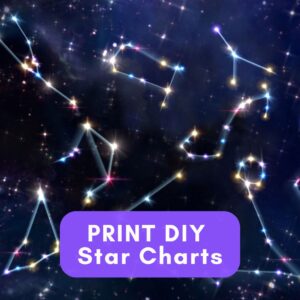This site contains affiliate links to products. I may receive a commission for purchases made through these links.
I’ve always been fascinated by the stars and galaxies above. It’s a fascination that’s led me to explore all sorts of space theme activities. These activities aren’t just for space enthusiasts like me, they’re perfect for anyone curious about the universe we inhabit.
Whether you’re a teacher looking to inspire your students with the wonders of the cosmos, or a parent wanting to spark your child’s imagination, space theme activities are a great way to go. They offer a fun, engaging way to learn about planets, stars, galaxies, and more.
Space Theme Activities for Exploring the Universe
Space is a frontier that I’ve always been fascinated with, and there’s no shortage of space-themed activities to delve deeper into this subject. For me, the beauty of these activities is that they’re not exclusive to space enthusiasts. Anyone with a hint of curiosity can find a starting point.
Firstly, a stargazing session is the perfect primer for universe exploration. All that’s needed is a clear night and perhaps a telescope for a more profound viewing experience. I can’t emphasize enough the magic of identifying constellations, spotting planets, or tracking the space station as it waltzes through the night sky.
Ever tried to recreate the surface of the moon? Constructing an moon’s surface model using clay, paint, or other readily available materials can be an engaging activity. It’s also a hands-on way to comprehend the pockmarked appearance of our nearest celestial neighbour.
Virtual tours also make for excellent space-themed activities. With technology being what it is today, we can now tour the solar system without leaving Earth. Virtual tours of the International Space Station, Mars, or the Hubble Space Telescope provide exciting, enriching experiences.
Creating a solar system mobile is another activity that springs to mind. It serves as a delightful project that combines arts, crafts, and astronomy. With this activity, children can learn about the planets and their order in the solar system while having fun creating their very own planetary model.
Experiments like building and launching a water rocket engage learners in a practical way. Not only is it a blast to see your rocket reaching for the sky, but it also provides valuable insights into aerodynamics, gravity, propulsion, and more.
These activities, among others, are wonderful ways to explore the universe, delve into astronomy, and inspire creativity. The joy of discovery through these activities is boundless, encouraging us all to look up and wonder.
1. Build a Model Solar System
Building a solar system model is undoubtedly one of the best ways to visualize and understand the vastness and intricacies of our universe. It’s not just a fantastic activity for children, but adults can join in the fun, allowing a splendid bonding time.
To kick start, you’ll need some essential items: foam balls of different sizes, colored paints, sculpting clay, and a strong wire or string to hang your planets. Additionally, for an added touch of realism, let’s not forget to represent the Sun, which is after all, the center of our solar system.
Next, ensure each planet is of the right size and color. Don’t hesitate to pull in some online resources for authentic representations. Pulling our statistics from NASA, here’s a quick guide for the planets’ relative sizes and colors.
| Planet | Relative Size | Color |
|---|---|---|
| Mercury | 0.383 | Gray |
| Venus | 0.949 | Yellow-White |
| Earth | 1.00 | Blue-White |
| Mars | 0.532 | Red |
| Jupiter | 11.209 | Orange-White |
| Saturn | 9.449 | Yellow |
| Uranus | 4.007 | Light Blue |
| Neptune | 3.883 | Dark Blue |
Once you’ve painted and dried your planets. Give them some spin! Arrange them in order from the sun. Don’t forget to add the asteroid belt between Mars and Jupiter. Using clay, create small asteroids and set them in a circular pattern.
Persistently encourage everyone involved in the activity to read up and share cool facts about the planets they’re working on. It’s a surefire way to turn this activity into a remarkable learning experience. The beauty of constructing a model solar system is that it’s an enthralling blend of art and science, fostering creativity while nurturing a sense of curiosity about the cosmos.
So, why wait? Grab your crafting materials and delve right into this astonishing activity. As you progress, you’ll undoubtedly appreciate the breadth of our solar system’s scale and the unique characteristics of every celestial body nestled within it.
2. Create Galaxy Art
Teaching about the universe need not always be about literal representations and built transportations into the stars. Sometimes, we can journey through our creativity, letting our love for the cosmos shine through our artistic expressions. Creating galaxy art is one such way. Let’s dive into how we can create our very own masterpiece inspired by the celestial charms of our universe.
To embark on this artistic endeavor, you’ll not need anything fancy. Basic art stationery will suffice. Here’s what you’ll need:
- Acrylic paints (mostly black, blue, purple, white and yellow)
- Canvas (choose your preferred size)
- Paintbrushes
- Sponges
- A toothbrush (preferably old)
Now that we’re ready with our supplies, take a moment to visualize your galaxy. It could be a spiral galaxy like the Milky Way, or an elliptical galaxy or any form your interstellar imagination leads you to.
Begin by painting your canvas black, making sure to cover the entire surface evenly. Once dried, use sponges to gently dab on colors – blues, purples, and a sprinkle of white – to create stars. It’s important to remember that galaxies aren’t uniform – some areas will be denser with stars while others, less so.
Next up is creating the standout feature of galaxies – stellar streaks and nebulous clouds. Use different shades of a single color and swirl them around to give a mixed, nebulous effect.
Turn your toothbrush into a space tool by flicking white paint onto the canvas for a scattered star effect, ensuring your galaxy is teeming with distant suns.
There it is – your galaxy painting is complete. It’s a testament not only to your artistic capabilities, but also to your fascination with space. What’s more interesting is that every painting will be unique, just like every galaxy in our universe.
Experiment with different colors, use a variety of techniques and make this magical cosmic art your own. Space has always challenged our understanding. The more we know, the more there is to explore. Remember, the universe is within us as much as it is outside. Now, let’s explore the next space-themed activity – creating constellations on a star chart.
3. Design and Launch a Rocket
Next on our journey through the cosmos, we delve into the heart of space exploration: Rocketry. Whether it’s delivering a rover to Mars or sending humans to the moon, rockets are a critical part of our journey to the stars. But have you ever wondered how these advanced vehicles are designed and launched? I know I have, and it’s time to answer these burning questions.
Let’s first understand the principle behind a rocket launch. Newton’s third law of motion provides a simple explanation: for every action, there’s an equal and opposite reaction. When fuel in a rocket burns, it releases gases downward and the rocket is pushed upward — that’s called thrust. Now let’s put this theory into practice.
A simple and fun rocket design activity is creating a water rocket. Apart from being engaging, it’s also educational as it helps in understanding the basic principles of physics and engineering. Below is a quick and easy guide for you to design and launch your own water rocket:
- Gather materials: 2-liter plastic soda bottle, cardboard, duct tape, a cork, and a bicycle pump
- Use the cardboard to design fins and nose cone for your rocket and attach them using duct tape. Be creative and experiment with the designs!
- Fill the bottle halfway with water, insert the cork firmly into the bottle’s mouth
- Connect the bicycle pump to the cork. Now, your DIY rocket is ready for launch.
Ensure to be in an open area for launching the rocket. Stand back and start pumping air. As the pressure inside the bottle increases, eventually the cork will be forced out, causing the water to be ejected downwards which in turn launches the rocket!
With this exercise, you can observe how changes in fin design or amount of water can affect the rocket’s flight path and distance. Feel free to indulge your inner scientist and conduct experiments to see the outcomes. By designing and launching your own water rocket, you’re not just learning, you’re experiencing the thrill of space exploration.
Engaging? Absolutely. Informative? Indeed. Just remember, this is space-themed fun – there’s always more mysteries to uncover and experiments to perform in the Universe’s backyard – our home.
4. Explore the Night Sky with Stargazing
Taking a dive into the vast ocean of stars, you’ll find stargazing to be a timeless, space-themed activity that lets us marvel at the universe from our own backyards. Delving into astronomy might sound intimidating at first, but fear not. Start small, learn the constellations and soon enough, you’ll trace the Milky Way with your own eyes.
It isn’t just about appreciating the night’s beauty. Stargazing can be a learning journey, enveloping you in the mysteries of space, time and our place in the cosmos. What are constellations? Why do stars twinkle? Questions arise as we gaze into the night sky, and to answer them is a learning experience like no other.
Stargazing doesn’t need fancy equipment. Yes, telescopes allow us a closer look at celestial bodies, but all you really need is a clear night, away from city lights and an open mind ready to explore the universe’s expanse. Remember, patience plays its part too. Light from stars millions of miles away can take a while to reach us, but the wait is well worth it. As the night evolves, so does the sky, revealing new celestial delights.
If you want to take it a step further, smartphone apps can significantly enhance your stargazing experience. Apps like SkyView and Star Chart can help identify celestial bodies right at your fingertips. They overlay constellations, planets, and more on your phone’s camera view, ensuring you get the most from your celestial exploration.
To augment your stargazing journey, you could:
- Learn about different celestial bodies and inform yourself about them.
- Keep track of nightly sky changes.
- Sketch or photograph what you observe, creating your own cosmic album.
5. Learn about Astronauts and Space Travel
To truly explore space-themed activities, let’s dig into the thrilling world of astronauts and their missions. It’s an incredible journey into the unknown, offering compelling insights into the challenges and experiences of space travel.
Knowing About Astronaut Basics
Astronauts are indeed space heroes, fearlessly exploring the cosmos. But they’re also scientists, engineers, and explorers. Their training prepares them to carry out scientific experiments, repair equipment, and even attend to medical emergencies. To uncover more about their life, several resources can be tapped into:
- Inspiring astronauts’ biographies
- Documentaries about space missions
- NASA’s Kids Club for interactive games and activities
Simulating Space Travel
Expressing love for the Cosmos isn’t limited to learning about astronauts; it’s also about living part of their journey. Here are few ways you can do that:
- Conduct ‘zero-gravity’ experiments in the pool.
- Build a DIY space capsule for pretend play.
- Try astronaut food, or create a space-themed meal.
Following Current Space Missions
In the age of private space companies like SpaceX and Blue Origin, there’s something new happening every day. Kids and adults alike can follow these missions in real-time. You can watch rocket launches, walk-throughs of the International Space Station, and interviews from astronauts aboard. Regularly checking NASA’s website, or installing any number of space news apps can help you stay up-to-date with the latest.
Before diving into the next activity, remember that space exploration is about courage, curiosity, and discovery. Let’s use these learning opportunities to deepen our understanding and fascination with the universe.
Conclusion
So there you have it. We’ve journeyed through a universe of space-themed activities, from exploring the lives of astronauts to simulating space travel. We’ve dived into resources that bring the cosmos to our fingertips, and even had a taste of astronaut food. We’ve seen how staying tuned to current space missions can keep us in touch with the final frontier. But remember, it’s not just about the thrill of the journey. It’s about the courage to venture into the unknown, the curiosity to ask questions, and the joy of discovery. So, strap on your space helmet, fuel up your curiosity, and let’s keep exploring the wonders of space together.
1. What are some ways to learn about astronauts and space travel?
You can learn about astronauts and space travel through a variety of resources such as biographies, documentaries, and interactive games. You can also follow current space missions.
2. What roles are played by astronauts?
Astronauts are not just space heroes, they also serve as scientists, engineers, and explorers.
3. How can we simulate space travel?
Simulating space travel can be fun and educational. You can perform “zero-gravity” experiments in the pool, build a DIY space capsule, or even try out astronaut food.
4. What’s the relevance of current space missions to learning about astronauts?
Following current space missions, like rocket launches and astronaut interviews, helps you stay informed about space travel. This allows you to correlate your learning with real-life developments.
5. What qualities are important for space exploration?
When it comes to space exploration, some of the key qualities include courage, curiosity, and the spirit of discovery.




